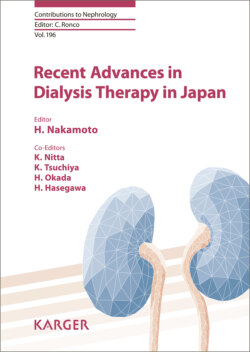Читать книгу Recent Advances in Dialysis Therapy in Japan - Группа авторов - Страница 23
На сайте Литреса книга снята с продажи.
HD Patient-Specific Underlying Cardiac Abnormalities Related to SCD
ОглавлениеIn general, most SCD events are believed to be due to fatal ventricular arrhythmias, ventricular tachycardia or ventricular fibrillation (VF). Although fatal ventricular arrhythmias can occur in healthy subjects without any cardiac abnormalities, most deaths from SCD have some form of underlying cardiac abnormalities. In the general population, three major abnormalities, coronary artery disease, left ventricular hypertrophy, and severe left ventricular systolic dysfunction, are the most common causes of fatal arrhythmia resulting in SCD. The yearly incidence of SCD was found to be extremely high in patients with myocardial infarction and with low ejection fraction (<35%) and/or congestive heart failure [11]. On the other hand, in dialysis patients, there are three specific important findings that may underlie their increased incidence of SCD. First, even after successful coronary revascularization, the incidence of SCD in HD patients remained higher than in the general population [12]. This means that coronary revascularization therapy to resolve myocardial ischemia may be an insufficient way to prevent SCD in HD patients. Second, about 70% or more of ESKD patients have concentric and eccentric left ventricular hypertrophy [13], which suggests that interstitial fibrosis, decreased coronary perfusion reserve, and decreased ischemia tolerance lurk in the hearts of many dialysis patients. Third, even mildly impaired left ventricular function, ejection fraction <50% [14], indicates a greater risk of onset of SCD in dialysis patients.
